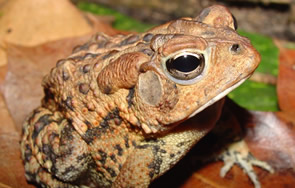
Southern Toad
Bufo terrestris
Photo by Aubrey Heupel
Description: The southern toad closely resembles the American toad and the Fowler’s toad but is most easily distinguished by the large knobs on its pronounced cranial crests. Color may be brown, tan, reddish, gray or blackish with a variable number of warts in each large dark spot on the back. It may have a light middorsal stripe. Males are smaller than females and have dark throats.
Habitats and Habits: These common toads occur throughout most of the Coastal Plain. In many portions of the lower Coastal Plain, they are the only large toads. Eggs are deposited in long strings. They hatch in about a week or less, and the small blackish tadpoles transform in about four to eight weeks. Shallow ponds and other temporary wetlands are preferred breeding sites, but permanent bodies of water are also used. Southern toads may hybridize with Fowler’s or American toads in areas where their ranges overlap.
Call: Southern toads breed mostly from late February to May, but they may also call later in the summer. Their call is a long trill resembling that of American toads but usually shorter in duration and slightly higher in pitch. Males also utter a chirping “release call” if handled or mistakenly grasped by another male.
Frog Fact: Small juveniles of our three large toads (American, Fowler’s and southern) are very difficult to distinguish from each other. Locality, habitat and time of year can be useful for correctly identifying them. Juveniles and adults of all three species are terrestrial, returning to the water only to breed.
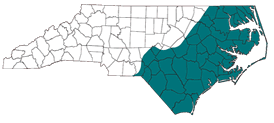
The shaded region represents the range of the southern toad in North Carolina.
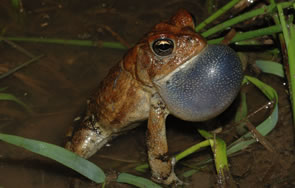

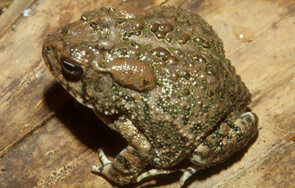
Photo by Tom Luhring
Photo by JD Willson
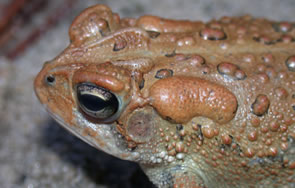
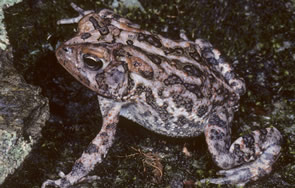
Photo by JD Willson
This website created by: Grant Connette and Evan Eskew.
Davidson College, Davidson, North Carolina 28035-1719.
Text and maps from: The Frogs and Toads of North Carolina. North Carolina Wildlife Resources Commission, Raleigh, NC.
Partial Funding for this website provided by a Associate Colleges of the South, National Science Foundation, and Duke Energy.